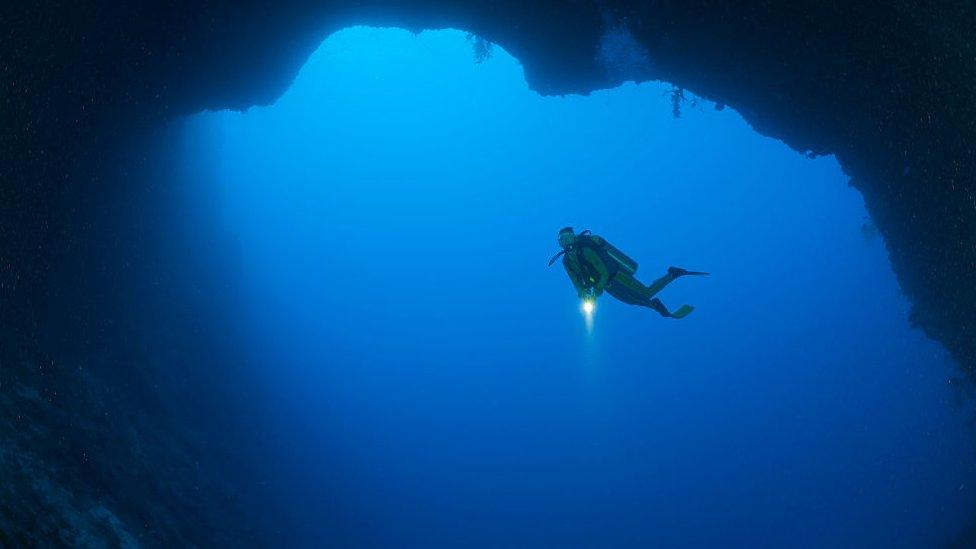Taam Ja' Mexico: What is a 'blue hole'?
- Published
- comments

Scientists have discovered a huge deep blue hole, in the sea off the coast of Mexico.
It's thought to be the second largest in the world - at nearly 300m deep!
Named Taam Ja' - it was found in Chetumal Bay, located on the Yucat谩n Peninsula in the south-east of the country, close to the border with Belize.
Blue holes are underwater sink holes, with several having already been found and explored around the world.
What have experts found?
The giant blue hole was originally discovered two years ago but details have only recently been released in the scientific journal Frontiers In Marine Science.
The team of researchers scuba dived, took water samples and used echo-sounding to find out more about the blue hole.
They found that the Taam Ja' blue hole has very steep sides and the mouth is located just under 5m below sea level - where the temperature and salt levels of the water change significantly.
It's also thought that the new discovery has a depth of 274 meters!
What are blue holes and how are they formed?
Blue holes are submerged springs and sink holes, most of them form in limestone rock, which can be very porous - meaning it has lots of tiny holes in it.
Over time, perhaps centuries, water flow erodes the limestone and creates cracks, crevasses and caves leaving a void or an opening.
Even though not much is known about them, they are thought to be areas rich with animal and plant life.
Several blue holes have already been found and explored, although there may be many more.
The deepest hole to be discovered is the 'Dragon Hole' in the South China Sea, it was found and explored in 2016 and is thought to be just over 300m deep.
